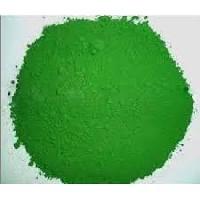
The reduction could formally be written:Na 2Cr 2O 7 + 3 SO 2 + H 2O → Cr 2(SO 4) 3 + 2NaOH Basic chromium(III) sulfateīasic chromium sulfate is produced from chromate salts by reduction with sulfur dioxide, although other methods exist. Similarly, dissolution of chrome alloys gives chromium sulfate together with ferrous sulfate. Extraction of chromite ore with sulfuric acid in the presence of some chromate gives solutions of chromium(III) sulfate contaminated with other metal ions. The hydrated salts of chromium sulfate can also be produced, albeit impure, by extraction of various other chromium compounds, but these routes are not economically viable. Evaporation of these acidic solutions affords the hydrate salt described above. A chromium(III) oxide coproduct is generated which is readily extracted into sulfuric acid. Anthroquinone and quinone are produced by on large scale by treatment of anthracene and phenol with chromic acid. The most useful source of chromium(III) sulfate are the Cr(III) wastes from the chromate oxidation of various organic compounds. Other chromium(III) hydroxides have been reported. It is associated with environmental damage. It results from the partial neutralization of the hexahydrates.

Most important commercially is basic chromium sulfate, which is thought to be SO 4 (CAS#3). Further heating yields the anhydrous sulfate.Ī variety of other chromium(III) sulfates are known, but also contain hydroxide or oxide ligands. It is obtained by heating the 18H 2O material above 70 ☌. 15(H 2O), (CAS #1) is a green solid that also readily dissolves in water. Hydrated chromium(III) sulfate, Cr 2(SO 4) 3.

Six of the 18 water molecules in this formula unit are water of crystallization.

The formula of this compound can be written more descriptively as 2(SO 4) 3. 18H 2O, (CAS #1) is a violet solid that readily dissolves in water to give the metal aquo complex, 3+. Anhydrous chromium(III) sulfate, Cr 2(SO 4) 3, (CAS #1) is a violet solid that dissolves in water upon addition of a reducing agent, which generates chromium(II) sulfates.Three chromium(III) sulfates are well characterized:


 0 kommentar(er)
0 kommentar(er)
